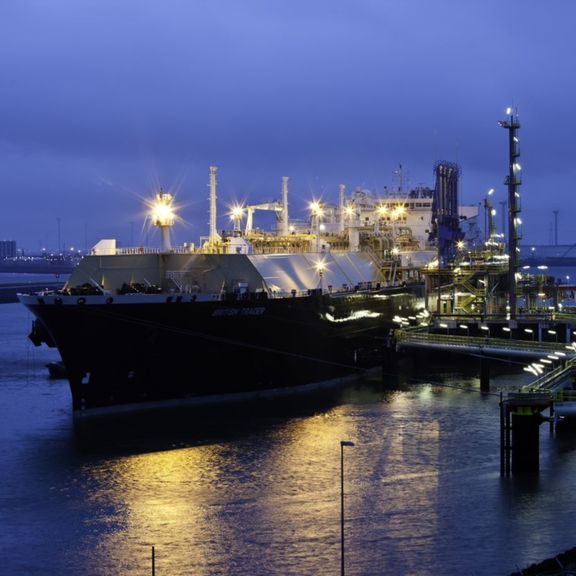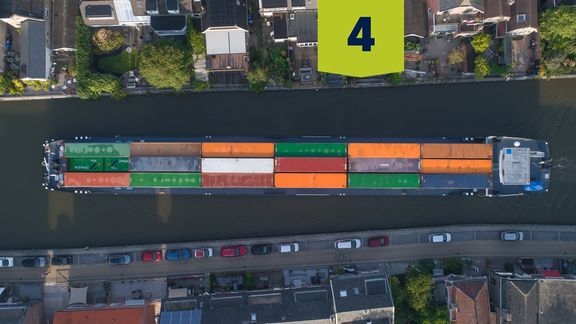
LNG
LNG is available in the port of Rotterdam for storage, transhipment and bunkering
LNG (Liquefied Natural Gas) currently plays an important role in ensuring an affordable and reliable energy supply for the Netherlands and Europe. LNG entering the port is used in industry, for electricity generation and as a transport fuel. The Port of Rotterdam Authority facilitates and encourages companies in the port to transition from fossil-based LNG to renewable variants or to other alternative fuels.
LNG in the port of Rotterdam
Via the Gate terminal, a joint venture between Gasunie and Vopak, located on the Maasvlakte, liquefied natural gas is delivered by tanker from the United States, Norway, the Middle East, Russia* and other global locations. Gate operates as a hub: from here, LNG is reloaded onto smaller tankers for re-export, sent in gaseous form via pipelines to the European gas network, or transported by truck to smaller, standalone gas networks across Europe. Companies in the port of Rotterdam also supply LNG as fuel for shipping and heavy road transport.
Would you like to know more about the available services and capacity of the Gate terminal, or are you seeking operational data? The Gate website can help you further.
- An LNG terminal with a capacity of 12 billion m3 for import and re-export, with facilities for loading bunker vessels and trucks
- LNG bunkering is possible in the port of Rotterdam, and the bunkering of renewable variants is encouraged through port dues (for bunker-only calls, bio and E-fuel >30%) and various collaborations
LNG infrastructure
Gate is currently expanding its storage capacity to 16 billion m3 with the addition of a fourth tank. The Port of Rotterdam Authority supports the expansion of the Yukon port with an additional berth for loading bunker vessels. During the transition to a climate-neutral port by 2050, we aim to continue contributing to the preservation of activities and jobs in the port, as well as ensuring the availability of energy for the Netherlands and Europe.
Liquefied natural gas
LNG is natural gas that is converted into a liquid by cooling it to a temperature of -162 degrees Celsius. This reduces its volume by a factor of 600, enabling efficient transportation, even over longer distances. LNG is highly flammable. Therefore, specific safety measures are required when handling liquefied natural gas. Companies in the port are fully aware of this and must implement these measures with the utmost care.
Transition
Vessels powered by LNG derived from fossil fuels have a lower negative impact on air quality compared to those powered by conventional fuel oil. Additionally, fossil LNG facilitates the transition to renewable LNG in shipping, thereby reducing the industry's CO2 footprint to near carbon neutrality.
Gate aims to reduce the terminal’s methane emissions as much as possible. Gate is therefore a member of The Oil & Gas Methane Partnership 2.0. As part of this, a methane emission reduction target will be established, and an action plan will be developed to achieve it. Annual reports are provided on methane emissions and the progress towards the target.
Making transport more sustainable
See how we are working on the sustainability of transport in the port of Rotterdam.

*Sanctions
Of course, LNG imports in the port of Rotterdam must comply with European sanctions against Russia Timeline – EU sanctions against Russia – Consilium.